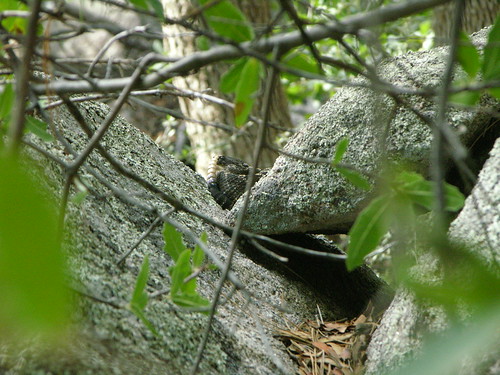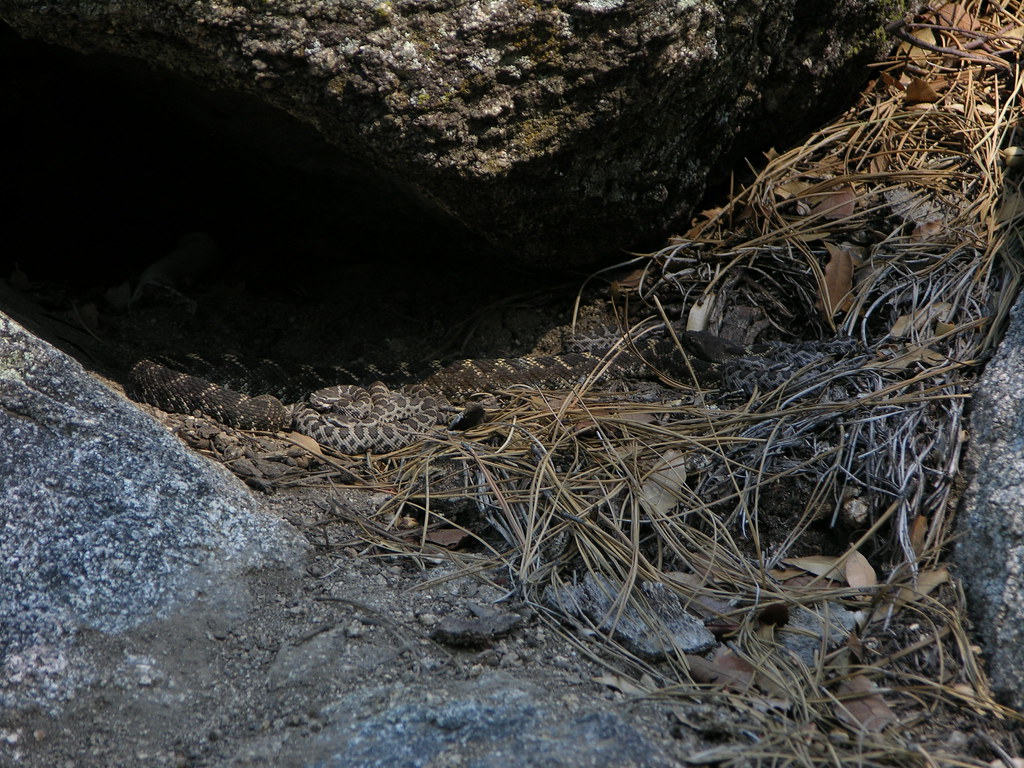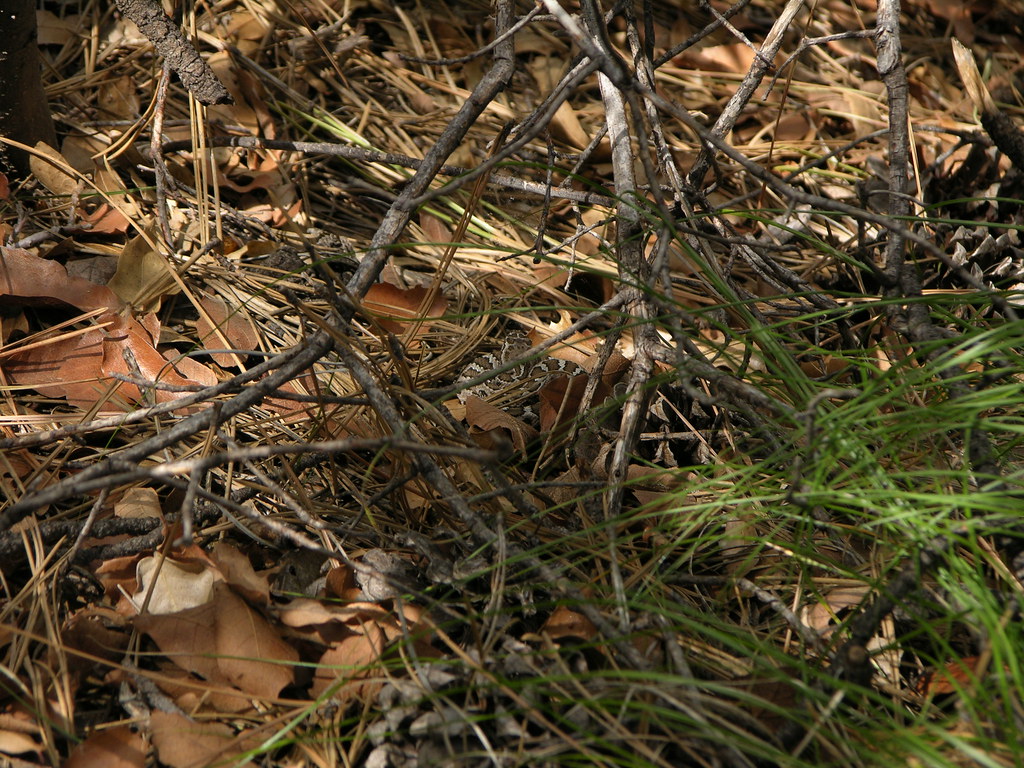Memorial Day Weekend 2010. Alice is a big, beautiful, dark female Arizona black rattlesnake with mustard yellow scales outlining each dorsal blotch. We first encountered her ~20 meters from a known rattlesnake den. Several of our party walked right by before we discovered her, coiled at an opening beneath a boulder, without her rattling or stirring. This is actually pretty typical behavior for rattlesnakes. Their primary defense is to remain still, silent, and rely on camouflage.
Alice was healthy-looking, and we could tell by her distended posterior that she’d be expecting babies in a few months. She was marked with lavender paint on her rattle and we noted several pattern aberrancies (see below). For the next few days Alice remained quietly coiled by her boulder as we passed by to monitor other snakes.
 |
| The two basal (closest to the body) segments of the rattle are painted lavender - it is purposely difficult to see so that she is not too visible to potentials predators. |
We returned on 27 July to find Alice coiled in nearly the same spot we left her two months prior. With the approach of birthing season (late August – early September), we repeated visits weekly, and Alice would reliably be found contently coiled in dappled sunlight. We respected her space, using binoculars and telephotography to verify her paint and markings, and she appeared unfazed by these activities. Despite our sporadic visits, it is unlikely that we missed a lot of Alice’s activity; pregnant rattlesnakes usually don’t feed or don’t make large movements.
A rattlesnake hunts by finding a promising spot to ambush prey, and then sits and waits with an ‘S’ curve in its neck, ready to spring when a lizard, bird or rodent happens across its strike zone. Critical to an ambush is unpredictability; a hunting rattlesnake might try several spots in a small area before moving off to a new hunting patch. We don’t know when Alice might have eaten last, or whether she would if a meal presented itself. But she was never seen in a hunting posture or with any evidence of recently ingested food item. So it is likely that Alice did not feed during her pregnancy, which is typical of most rattlesnakes.
Alice’s boulder complex has a footprint little bigger than a compact car. Despite its small size, we only observed her using a handful of spots during a couple of dozen observations, and she did so like clockwork. She would emerge in the morning at the mouth of a large opening, around 10am when the sun was angled above the pinetops. As the sun arced higher, she would retreat partially or completely into the deep shade of her boulder to keep from overheating. By afternoon, as the sun again filtered through trees to the west, Alice would emerge onto a west-facing rock ledge. Here she would stay until she had gained all the heat she could, and around 5pm she would retreat back under her boulder for the evening. On cool or cloudy days, she would be visible all day, ready to drink up any drops of rain that might collect on her or the granite walls of her home.
Alice’s home was a temple to the sun, and her daily ritual was an expression of her strong maternal instinct. Snakes are ectotherms; they depend on their environment to achieve and maintain a favorable body temperature. And maintaining a proper body temperature is especially important for a pregnant snake like Alice, whose babies’ development and timely delivery require as consistent warmth as mom can provide. Unfortunately, Alice lives in a cool, shady forest where staying warm is a challenge.
 |
| Despite apparently not feeding, Alice grew fatter and fatter over the next few weeks. |
Indeed the lucky girl had already acquired her first meal, likely one of the many newly hatched lizards. A week or two before the rattlesnakes were born three different species of lizards (Greater short-horned lizard, Phrynosoma hernandesi; Plateau fence lizard, Sceloporus tristichus; Plateau striped whiptail, Aspidoscelis velox) hatched and this area was literally crawling with lizards. Could this abundance of food, perfectly sized for neonate rattlesnakes, be the reason Alice chose this place to have her family? Will this little girl return to birth her young here in a few years?














0 comments:
Post a Comment